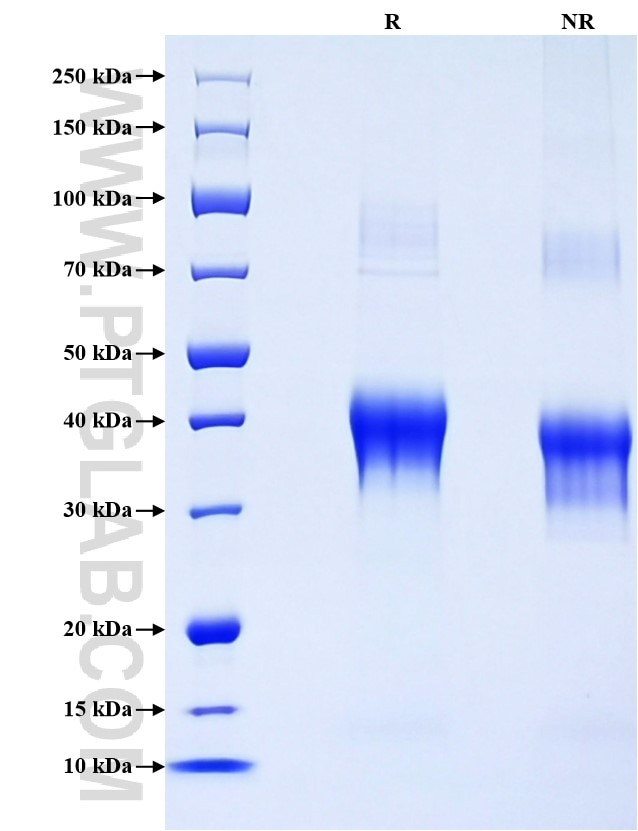Recombinant Mouse CD23 protein (His Tag)
Species
Mouse
Purity
>90 %, SDS-PAGE
Tag
His Tag
Activity
not tested
Cat no : Eg1295
Validation Data Gallery
Product Information
| Purity | >90 %, SDS-PAGE |
| Endotoxin | <0.1 EU/μg protein, LAL method |
| Activity |
Not tested |
| Expression | HEK293-derived Mouse CD23 protein Thr51-Pro331 (Accession# P20693-1) with a His tag at the N-terminus. |
| GeneID | 14128 |
| Accession | P20693-1 |
| PredictedSize | 32.9 kDa |
| SDS-PAGE | 35-45 kDa, reducing (R) conditions |
| Formulation | Lyophilized from 0.22 μm filtered solution in PBS, pH 7.4. Normally 5% trehalose and 5% mannitol are added as protectants before lyophilization. |
| Reconstitution | Briefly centrifuge the tube before opening. Reconstitute at 0.1-0.5 mg/mL in sterile water. |
| Storage Conditions |
It is recommended that the protein be aliquoted for optimal storage. Avoid repeated freeze-thaw cycles.
|
| Shipping | The product is shipped at ambient temperature. Upon receipt, store it immediately at the recommended temperature. |
Background
CD23, also known as low affinity immunoglobulin epsilon Fc receptor, is a transmembrane glycoprotein present on a subpopulation of B lymphocytes in germinal centres, EBV-transformed B-lymphoblastoid cell lines, follicular dendritic cells, and a subpopulation of peripheral blood cells. CD23 has essential roles in the regulation of IgE production and in the differentiation of B-cells. CD23 can be cleaved into soluble fragment (soluble CD23, sCD23) of various sizes displaying pleiotropic biological activities. Increased plasma levels of sCD23 have been reported in allergic disorders, acute viral diseases, lepromatous leprosy, B-CLL, and inflammatory diseases like RA, SLE and sarcoidosis.
References:
1. Delespesse G. et al. (1991). Adv Immunol. 49:149-91. 2. Sarfati M. et al.(1996). Blood. 88(11):4259-64. 3. Schönermarck U. et al. (2000). Clin Exp Rheumatol. 18(4):457-63.

